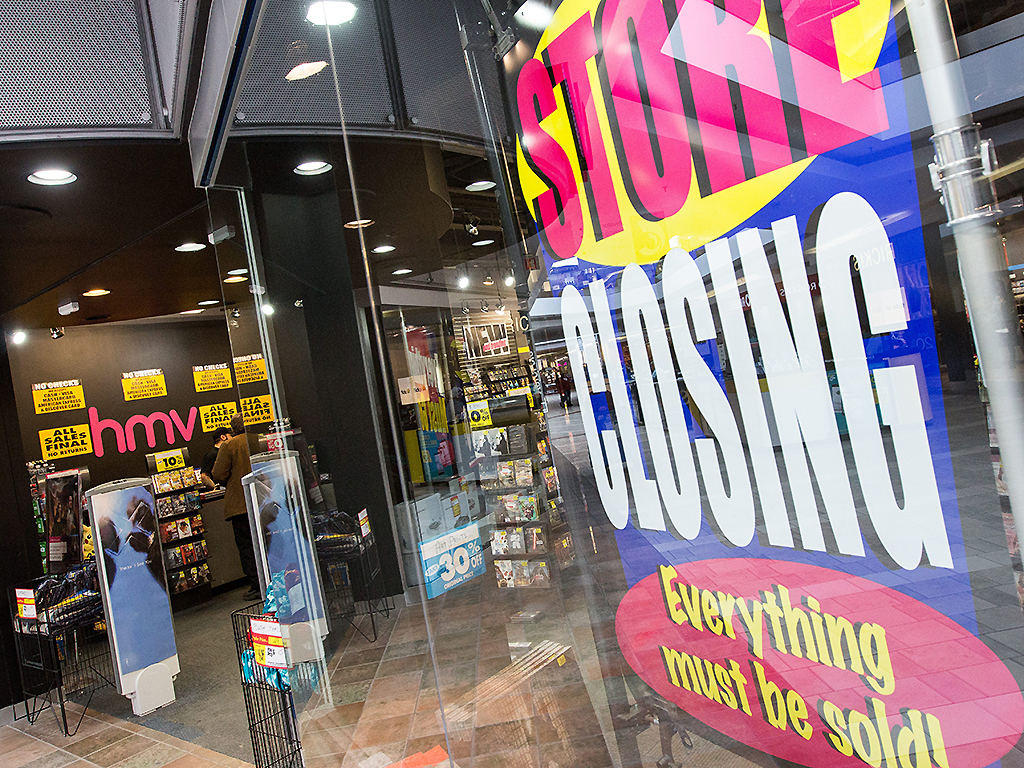We can blame Bill Gates for destroying the traditional music industry.

For close to a century, billions and billions were made selling pieces of plastic embedded with music to consumers. Record labels, record stores, radio stations, music magazines, and later, video channels, acted as cultural gatekeepers, only letting through a carefully vetted trickle of product.
No one realized it at the time, but when Windows 95 was released on Aug. 24, 1995, this entire international infrastructure began to crumble.
With Windows 95, the operating system had grown too large to be installed on 1.44 MB floppy discs. It could be done, of course — some version of the OS shipped with three dozen installation discs — but a more efficient format was a new thing called a CD-ROM. With nearly 700 MB of storage, Windows installs were a one-disc snap.
READ MORE: Five things to expect from ‘Ozark’ Season 2
There was an additional expense, of course. Computers now needed a CD-ROM drive, which was essentially a CD player. It wasn’t long before people began transferring their CD collection to their computer hard drives using new ripping software like WinAmp.
As we were upgrading our computers with this new hardware, the internet hit. Those ripped tracks sitting on hard drives with ever-increasing storage capacity (and now able to hold many thousands of music files in a new format called an “MP3”) were suddenly free to roam the planet.
And when the original Napster was released into the wild on June 1, 1999, it was the beginning of the end as the universe moved from physical music product to the virtual realm. Nothing has been the same since.
With that in mind, here’s a look back at how things used to be and how they are today.
THE WAY IT USED TO BE
People sat in front of their TVs for hours waiting for MuchMusic to play their favourite video.

Get breaking National news
THE WAY IT IS NOW
The channel’s programming is skewed so far away from music that it’s been rebranded “Much.” Meanwhile, 1.6 billion music videos are viewed daily on YouTube. All on-demand, of course. That’s 21 per cent of all the videos seen on YouTube, which are responsible for at least US$3 billion in revenue.
READ MORE: Eddie Murphy expecting his 10th child
THE WAY IT USED TO BE
A cassette recorder was always next to the radio with the pause button pressed when the song you wanted came on, you leaped across the room so you could get the song on tape. You always missed the first 10 seconds of the song and chances are the DJ was talking over the intro, but that was a small price to pay to have for on-demand music.
THE WAY IT IS NOW
Fire up Spotify or any other streaming service and hear any one of 45 million songs instantly.
THE WAY IT USED TO BE
Pray that your local record store had the album you wanted in stock. If not, you had a choice: try another store in hopes of having it that day OR ordering it (sometimes using the information contained in a giant loose-leaf catalogue on a metal stand), in which case it might arrive in a week or two.
THE WAY IT IS NOW
Albums? Who listens to albums anymore? Spotify playlists rule.
THE WAY IT USED TO BE
You’re determined to be the first person to own the new album from your favourite artist. Along with other like-minded fans, you line up outside the record store Monday night so that the moment the clock ticks past midnight, you could run in and buy a copy.
THE WAY IT IS NOW
Pre-order the album on iTunes. When you wake up the day of release, it’s already in your library.
READ MORE: John Goodman hints Roseanne Barr’s character will be killed off on ‘The Conners’
THE WAY IT USED TO BE
A hot show is coming to town. You make plans with your friends to camp outside the box office so you could be first in line to buy hard paper tickets. You’d also spend the entire night hoping that you chose the ticket outlet selling the best seats. When the box office finally opened, those who survived the inevitable stampede went home with tickets.
THE WAY IT IS NOW
You constantly hit “refresh” on the Ticketmaster website as the clock ticks up to exactly 10:00:00 a.m. When the appointed second hits, you’re trampled by bots.
THE WAY IT USED TO BE
You proudly displayed your record collection on shelving. The person with the most linear feet of albums (vinyl or CDs) won.
THE WAY IT IS NOW
“I have 256 gigs of music on my iPhone!”
THE WAY IT USED TO BE
Big speakers ruled. Untold billions were spent on stereo systems in an attempt to have the loudest, clearest and most accurate sound available. Aftermarket audio systems in cars were powerful enough to untorque chassis bolts.
THE WAY IT IS NOW
Skullcandy earbuds are just fine. The sound is good enough.
THE WAY IT USED TO BE
“Hey hey, my, my/Rock and roll can never die”
THE WAY IT IS NOW
Hip-hop rules. Rock is on its way to becoming the new jazz. Or so they would have us believe.
—
Alan Cross is a broadcaster with 102.1 the Edge and a commentator for Global News.
Subscribe to Alan’s Ongoing History of New Music Podcast now on Apple Podcast or Google Play










Comments